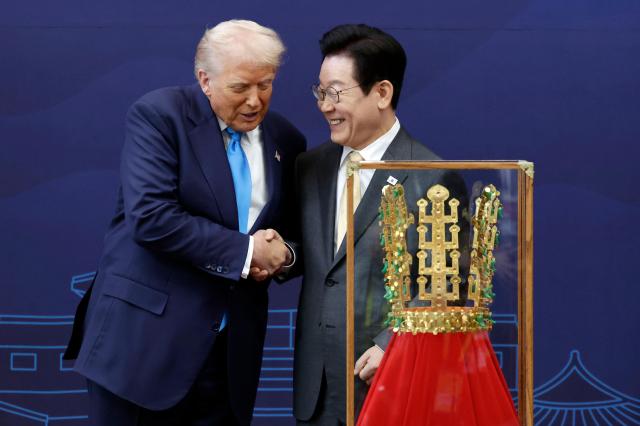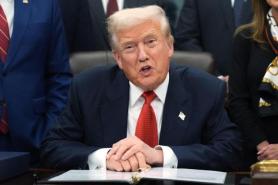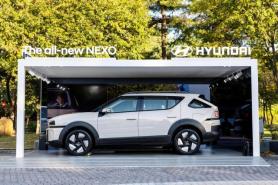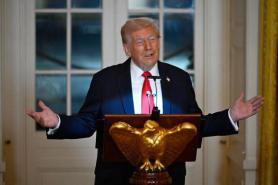
GYEONGJU, October 29 (AJP) -— President Donald Trump on Wednesday agreed to Seoul’s terms on South Korea’s $350 billion investment package after months of wrangling, clearing the way for a sweeping trade deal on the sidelines of the Asia-Pacific Economic Cooperation Summit, according to Seoul's presidential office.
The agreement—$200 billion in cash and $150 billion in shipbuilding projects led by Korean firms—will cut U.S. tariffs on Korean autos from 25 percent to 15 percent, bringing them in line with rates applied to Japan and Europe, which reached similar deals with Washington, presidential chief of staff Kim Yong-beom told reporters in a briefing in Gyeongju.
Kim said the annual cash outlay would be capped at $20 billion and distributed over several years depending on project progress.
Final approval had been delayed since July as Seoul pushed for installment payments and non-cash components, arguing that a one-time $350 billion transfer—equivalent to roughly 80 percent of Korea’s foreign exchange reserves—risked destabilizing the won. Trump, up until his arrival in Korea, had publicly insisted that Seoul pay “upfront cash.”

The breakthrough came after President Lee Jae Myung rolled out an unmistakably “golden” welcome for Trump visiting Korea on the final leg of his first Asian tour in his second presidency. Lee presented Trump with a replica of an ancient Silla gold crown and awarded him the Grand Order of Mugunghwa — Korea’s highest honor — citing his “contributions to peace on the Korean Peninsula.” The gesture played to Trump’s well-known affinity for gold and ceremonial recognition.
Kim said the trade package includes most-favored-nation status for Korean pharmaceuticals and wood products, tariff-free access for aircraft parts, generics and non-U.S. natural resources, and semiconductor tariffs aligned with rates applied to Taiwan.
Crucially, Korea secured protection for its agricultural sector, avoiding additional openings for rice and beef.
Safeguards were built into the investment structure, Kim added. Payment timing and scale may be adjusted if foreign-exchange volatility rises, and only commercially viable projects will proceed under a memorandum of understanding emphasizing “multi-layered” risk controls.
Profits will be split evenly between the two countries until principal repayment, with terms adjustable if full repayment is not met within 20 years. The agreement runs through January 2029.
The “golden” diplomacy extended beyond the negotiation room. Lee greeted Trump at the National Gyeongju Museum wearing a custom golden tie embroidered with Korean script representing a “golden future” for the alliance. Trump, in a blue tie, laughed and shook hands warmly.
He toured an exhibition of Trump-themed memorabilia — from MAGA hats to Korean-language editions of his books — asking aides to send photos to his wife, Melania. A luncheon followed, featuring fusion dishes including New York–inspired courses blended with regional Korean ingredients.
Another crucial deal-making awaits Trump as he is slated to meet Chinese President Xi Jinping, also here for the APEC conference, on Thursday. Trump, meanwhile, said he won't be meeting North Korean leader Kim Jong-un who has not returned the U.S. president's repeated invite.
* This article, published by Aju Business Daily, was translated by AI and edited by AJP.
Copyright ⓒ Aju Press All rights reserved.




